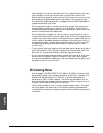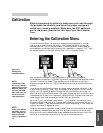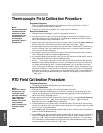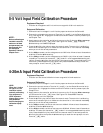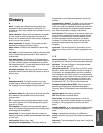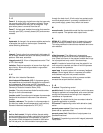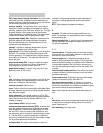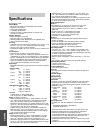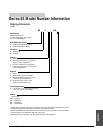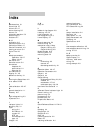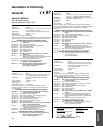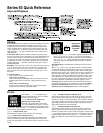
A.10 ■ Appendix Watlow Series 93
F - G
Form A A single-pole, single-throw relay that uses only
the normally open (NO) and common contacts. These
contacts close when the relay coil is energized. They
open when power is removed from the coil.
Form C A single-pole, double-throw relay that uses the
normally open (NO), normally closed (NC) and common
contacts.
H
hysteresis A change in the process variable required to
re-energize the control or alarm output. Sometimes
called switching differential.
I
integral Control action that automatically eliminates off-
set, or droop, between set point and actual process tem-
perature. See reset, automatic.
integral control (I) A form of temperature control. The I
of PID. See integral.
isolation Electrical separation of sensor from high volt-
age circuitry. Allows use of grounded or ungrounded
sensing element.
J - K
JIS See Joint Industrial Standards.
Joint Industrial Standards (JIS) A Japanese agency
that establishes and maintains standards for equipment
and components. Also known as JISC (Japanese
Industrial Standards Committee), its function is similar to
Germany’s Deutsche Industrial Norm (DIN).
junction The point where two dissimilar metal conduc-
tors join to form a thermocouple.
junction, cold Connection point between thermocouple
metals and the electronic instrument. See reference
junction.
junction, reference The junction in a thermocouple cir-
cuit held at a stable, known temperature (cold junction).
Standard reference temperature is 32°F (0°C).
L
limit or limit control A highly reliable, discrete safety
device (redundant to the primary controller) that monitors
and limits the temperature of the process, or a point in
the process. When temperature exceeds or falls below
the limit set point, the limit controller interrupts power
through the load circuit. A limit control can protect equip-
ment and people when it is correctly installed with its
own power supply, power lines, switch and sensor.
M
manual mode A selectable mode that has no automatic
control aspects. The operator sets output levels.
N
NEMA 4X A NEMA specification for determining resis-
tance to moisture infiltration and corrosion resistance.
This rating certifies the controller as washable and corro-
sion resistant.
O
offset (process) The difference in temperature
between the set point and the actual process tempera-
ture. Offset is the error in the process variable that is typ-
ical of proportional-only control. See also droop.
on/off A method of control that turns the output full on
until set point is reached, and then off until the process
error exceeds the hysteresis.
open loop A control system with no sensory feedback.
output Control signal action in response to the differ-
ence between set point and process variable.
overshoot The amount by which a process variable
exceeds the set point before it stabilizes.
P - Q
P control Proportioning control.
parallel circuit A circuit configuration in which the same
voltage is applied to all components, with current divided
among the components according to their respective
resistances or impedances.
parameter A variable that is given a constant value for
a specific application or process.
PD control Proportioning control with derivative (rate)
action.
percent power control Open loop control with output
power set at a particular level.
percent power limit Restriction of output power to a
predetermined level.
PI control Proportioning control with integral (automatic
reset) action.
Appendix



